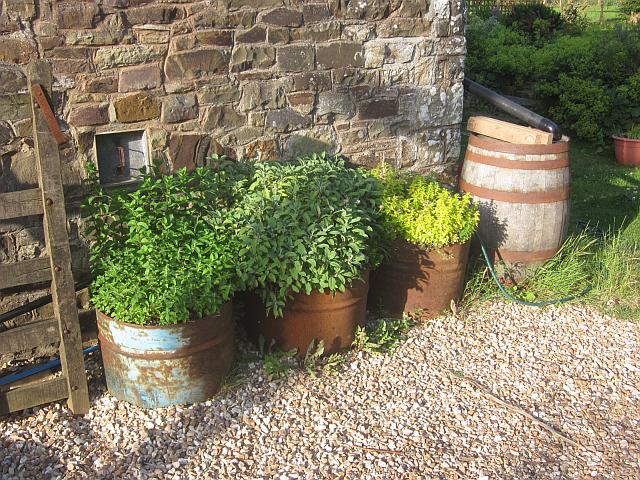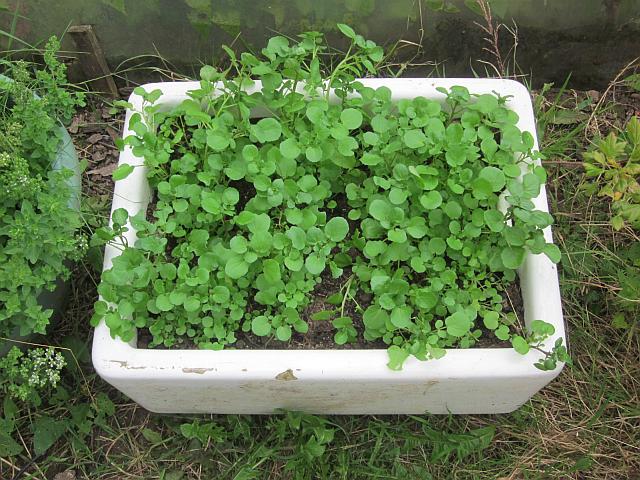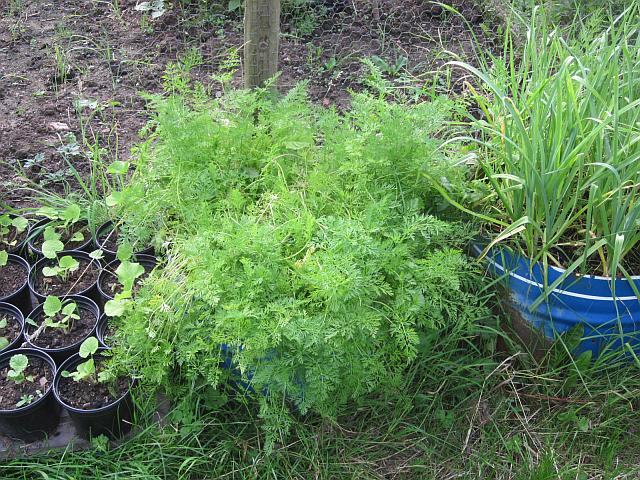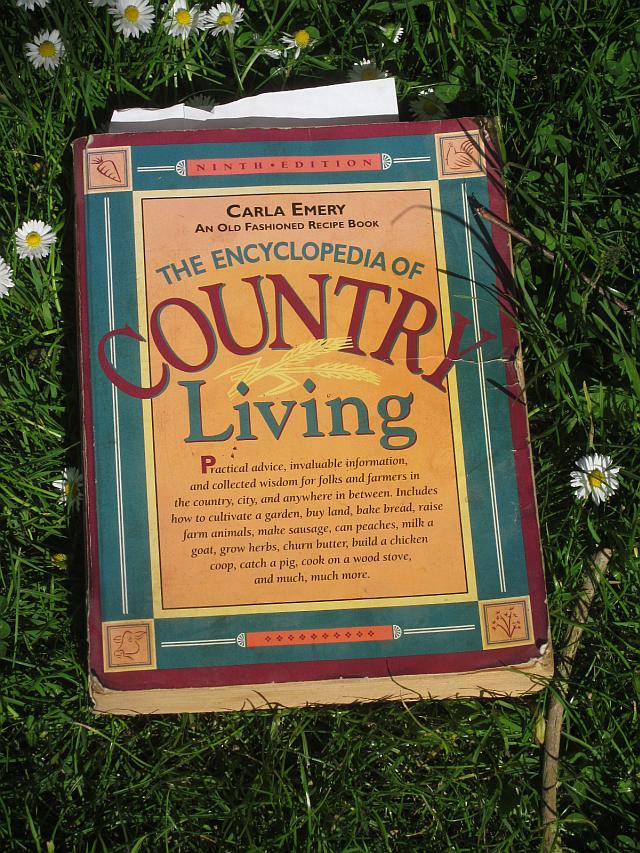Container Growing
The permaculturalists, those people who want to
explicitly design a sustainable world, have a design tool
constantly in their mind called 'zoning'. It's pretty much the
common-sense idea of putting things in the right place and, in
particular, of putting those things that need the most attention
closest to where you are. It's not an original idea; the old Devon longhouse design with livestock sharing
your home is an obvious example.
This picture, from a neighbours' garden, is a good example of
permaculture's 'Zone 1' - the bit nearest the house that
needs, and can get, a lot of attention.

Here we have herbs; mint, sage and oregano, growing in containers against the
gable end of the house. The healthiness of the plants is very
clear. Look at what they are producing in a small
space. We have salvaged oil drums placed against a west
facing wall where they will get the afternoon sun and radiated
heat. Also the water butt is close by and they are on the
access path where it will be easy to care for them and harvest
them. I'm jealous, because when I plant in containers I
somehow find it very easy to walk straight past them without giving
the watering that they should have. Containers are great
because they can give a good yield in s small space but they can
suffer from becoming too wet, too dry, too cold, or weed-ridden if
you don't look after them. Bigger containers have fewer problems, so
that's what I'm using.

One crop that works in a container for me is watercress. I grow it in old stone sinks
because, although it doesn't need running water, it does seem to
like the cool, damp conditions that they easily provide. I
have one late summer/autumn crop that is grown outside and a
winter/ early spring crop in the polytunnel. It's a really
welcome addition to salads, sandwiches and stir-fries early in the
year. It will self-seed readily when conditions get hot or
dry.
Here's another one of my neighbour's containers.
(Admittedly it needs thinning). This contains carrots.

My neighbour is doing this because he hopes that the dreaded carrot fly will not be able to jump high enough
to get into the container. Other ways of avoiding carrot fly
infestation include using horticultural fleece, deploying nematodes
and planting onions nearby to disguise the smell of carrots.
Planting in containers apparently relies on the fact that the
carrot fly can't jump too high - it doesn't fly well. How
high can a carrot fly jump? The RHS mentions barriers of 2
feet high and the Guardian is metric at 75 cm.
How far can you go with container
gardening?
Inspirational Books -
#3

The Encyclopaedia of Country Living by Carla Emery
This is a monster volume of over 800 pages. I first
bought it when still living in Bristol. I think I must
have been ordering books from Eco-logic
on the 'net and just added this to my order. At first I just
used it as a reference. The 9 pages on onions, for instance,
are the best reference to the allium
family that I know. Later, during one winter, I
more or less read the whole thing from cover to cover.
It has to be said that the book is American so language,
culture, climate and the measurements in recipes are a bit odd to
us. The book started as a duplicated work published in instalments
for its subscribers and contributors. The production of the
book is as remarkable as its contents. It took 4 and half
years for the first edition to appear and the last one came out
after 24 years, during which time the author had 7 children, become
a TV pundit, had a divorce and nearly a nervous breakdown.
All this would explain why there is a piece on 'giving birth by
yourself' - or in the wilderness.
Wikipedia says "The Encyclopaedia of Country Living presents an
exhaustive overview of virtually every topic relevant to
homesteading and self-sufficiency" and I have no reason to argue
with that. Definitely not required reading for everyone,
particularly with its U.S. orientation and ageing data, but I'm
glad to have it on my bookshelf.